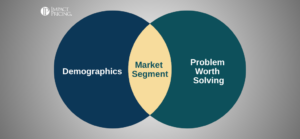I and almost every pricing expert in the world are huge proponents of value based pricing. My definition of VBP is charge what the buyer is willing to pay. This is impossible to do perfectly, but we have many tactics and tools to get closer and closer.
However, most companies who sell physical products still use cost-plus pricing. They justifiably do this for two key reasons: it is easy and they often have way too many products to do individual ongoing value-based pricing exercises. Actually, this is one reason. Too many products to price means they need something easy.
Cost-plus pricing means figuring out the costs and adding a margin. It’s simple, much simpler than value-based pricing. But can we find a way to combine these two concepts? Yes!
A powerful yet relatively easy technique is to categorize the products or product lines and then use different margins for different categories. The margin for each category can be chosen based more on an average willingness to pay.
A simple example. Let’s think of a retailer selling shirts. They have red, blue, black, and green shirts. The blue shirts are by far the most popular and people would pay more for them, but you don’t charge more because it complicates your internal pricing and your buyers thought process.
However, if you’re known as a shirt company, and people come to your store because they want to buy shirts, you may want to regularly put shirts on sale to bring more people in. Then, when you sell ties or other accessories, you can charge a higher margin. This is similar to a loss-leader in a grocery store, not that I’m suggesting you take a loss on your shirts.
The question now becomes, how do you categorize your products? Although it is likely different for different situations, here are a few ideas.
- Products that bring in customers
- Add-on products
- Value of the brands of products
- Level of competition
- Innovative new products
- Mature commodity-like products
- Growth rate of the product category
This thinking can apply to any company with a lot of products, including retailers, distributors, and manufacturers. Although you have to put a price on every product, you don’t have to analyze the price of every product. Instead, analyze the categories. Determine the margins that make sense for each category. Then, use simple cost-plus pricing for each product in a category.
Companies that use value-based pricing must trade off complexity of their internal processes with the additional return they get by pricing closer to a buyer’s willingness to pay. Although I might like to believe differently, pure value-based pricing is not optimal in every situation.
I’d love to hear your thoughts.















